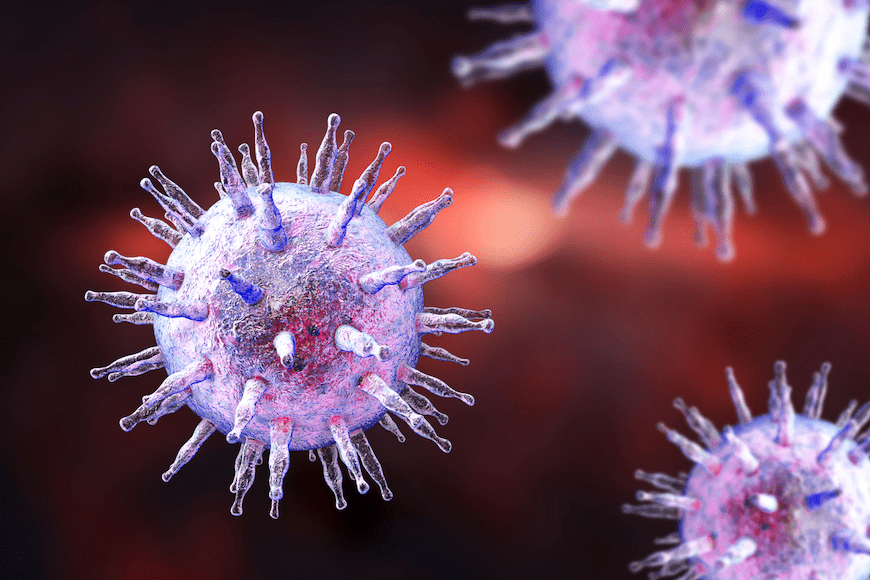Anthony Epstein, one-third of the team that discovered the Epstein-Barr virus, has died, according to multiple news outlets. The acclaimed pathologist passed away at his London home on Feb. 6. at the age of 102.
Epstein and his colleagues, Yvonne Barr and Bert Achong, stumbled onto the virus that bears his name – the first human tumor virus – in 1964.
“At that time, the idea that a virus caused human cancer was met with some skepticism because the theory that cancer was infectious had been dismissed in the previous century,” Paul M. Lieberman, Ph.D., at the Wistar Institute at the University of Pennsylvania, wrote in 2014. “Stalwart investigators continued to track EBV until the viral culprit was declared a class I carcinogen by the International Agency for Research on Cancer and the World Health Organization in the late 1990s. Despite the consensus that EBV is a bona fide tumor virus, the mechanisms of cancer causation by EBV remain an area of active investigation and controversy 50 years since its initial discovery.”
A Chance Meeting and a Delayed Flight
As the story goes, Epstein attended a lecture in 1961 at Middlesex Hospital Medical School in London. Irish surgeon Denis Burkitt, who’d been working in Uganda, spoke about a tumor he kept seeing in the local kids. Coincidentally, Burkitt’s story, which hinted at environmental factors at play, dovetailed with Esptein’s research at the time.
After the talk, Epstein asked Burkitt if he could get some tumor samples. But a breakthrough remained elusive. For three years, Epstein pored over the samples. But he failed to find the answers he was looking for.
Finally, in December 1963, weather diverted the plane ferrying one sample. When Epstein received it several days later, he figured it was ruined, tainted by a cloudy substance.
“The fluid was cloudy. This suggested it had been contaminated on the way,” Epstein recalled later in an interview with the BBC. “Was it full of multiplying bacteria? Before we threw it away, I looked at it under a wet preparation microscope and saw huge numbers of free-floating, healthy-looking tumor cells which had been shed from the edge of the tumor.”
Intrigued, Epstein decided to study them. The trio published their findings – evidence of an undiscovered virus from a tumor – in the Lancet, a British medical journal.
First Step of Many
The discovery marked the beginning of a journey. One we’re still on.
While the discovery led to multiple other breakthroughs in the analysis and treatment of other disorders, such as Hodgkin’s lymphoma, multiple sclerosis, and HPV, a vaccine for Epstein-Barr remains frustratingly out of reach.
Dorothy Crawford, emeritus professor of microbiology at Edinburgh University, told the BBC that up to 95% of adults have the Epstein-Barr virus.
“The virus is spread in childhood at different rates – in the saliva, so through close contact. In African countries most children have it by the age of two because they share cups in their household,” Crawford explained. “The rate is lower in middle-class areas of England. So if you haven’t already been exposed by your early teens it can cause glandular fever.”
But the work continues. As recently as last October, University of Florida researchers published a study that showed promise in preventing the virus’s progression.
Further Reading
Researchers Uncover Stronger Link Between Epstein Barr and MS
Epstein Barr Virus Linked to Multiple Sclerosis, Compelling Evidence Suggests
Cost of Illness and Comorbidities in Adults Diagnosed With Attention-Deficit/Hyperactivity Disorder




